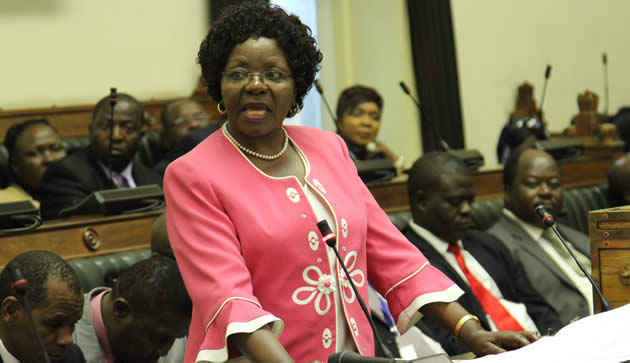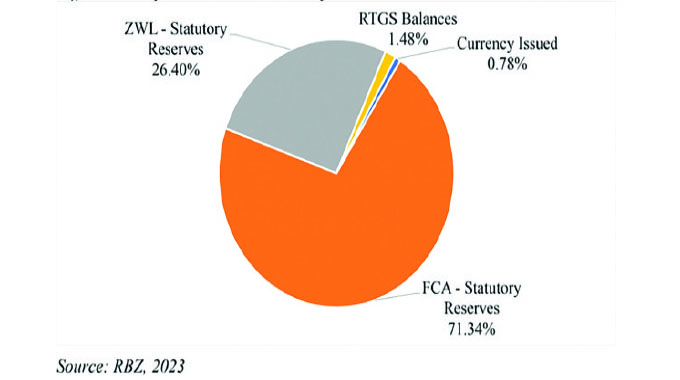New RBZ policy commendable but . . .
Kipson Gundani Buy Zimbabwe
On May 4, the RBZ Governor Dr John Mangudya issued a press statement that explains an avalanche of monetary policy measures to deal with the cash shortages that have been rampant of the past few weeks. The major policy highlights in the press release include;
1. Restoring and promoting multi-currency system, with 40 percent of all new USD foreign exchange receipts from export of goods and services converted by the RBZ at the prevailing exchange rate to rands and 10 percent to Euros. Diaspora remittances and NGOs money will be exempted from this policy measure.
2. Introduction of more bond coins and bond notes of denominations of $2, $5, $10 and $20 in the next two months backed by the US$200 African Export- Import Bank (Afreximbank) facility.
3. Rationing of foreign currency towards competing demands by instituting a foreign exchange priority list. More so, the RBZ is encouraging that payments for various imports of goods and services are done using the currency of origin of the imports.
4. New daily cash withdrawal limits were set. You can now withdraw US$1 000; 1 000 Euros and R20 000 per day. In addition to this, you are now only allowed to take similar maximum amounts out of the country at a time.
5. Enforcement of the multi-currency pricing of goods and services and a call for shop owners to think in rand terms particularly on products coming from South Africa.
6. Retailers, wholesalers, businesses, local authorities, utilities, schools, universities, colleges, service stations, informal sector, among others are, with immediate effect, required to install and make use of the requisite POS machines. This requirement extends to all Government departments and public entities, including toll gates.
Background to the cash shortages
The cash shortages are a combination of various factors which include the following:
1. Zimbabwe’s trade deficit, the gap between its exports and imports, has widened from an average $400 million 10 years ago to an average of $2,5 billion between 2011 and 2015. Zimbabwe imports more than it exports, which means there is more money leaving the country than money coming in. With industry collapsing, more dollars are being used to import goods at a time when the country’s primary exports have seen a decline in prices since 2013.
2. The strengthening of the US dollar against emerging market currencies such as the rand has stimulated a huge demand for the US dollar, which is seen worldwide as a reserve currency and this has escalated the mopping up of the US dollars from the local market.
3. The high degree of informalisation has seen many businesses, mainly the small to medium sized enterprises avoiding using the mainstream banking. Though there are various estimates on the quantum of money circulating in the informal sector, the general consensus is that the amount is significantly huge.
4. In the 2016 monetary policy statement, the RBZ Governor bemoaned the scourge of the illicit outflows which has also contributed significantly to the cash crunch. As much as $1,8 billion in the form of export sale proceeds and inflated management fees as well as payments for technical and professional services was funnelled out of the country in 2015, according to the RBZ.
The economics of the Bond coins and Notes
1. The Zimbabwean economy being too frail and small to pay the interest which would come with a seigniorage contract, the country chose instead to implement a multi-currency environment based on the US dollar. However, this arrangement has meant a shortage of small change in coins and concomitant cash shortages that are often associated with the factors explained above.
2. Every currency gets its value from a particular source. This may be gold or currency reserves. In the case of bond coins and notes, their value comes from a bond facility from the Afreximbank as explained above.
The planned bond notes are backed by a new $200 million bond, from Afreximbank in addition to a $50 million bond, a form of a loan, for bond coins introduced to ease the shortage of change in the economy in December 2014, as such, the bond coins and notes derive their name from the fact that they are guaranteed by a bond facility.
3. More importantly, the bond coins can only operate under the multi-currency regime. The local currency is now defunct and will take many years to return.
The local currency can only return when economic fundamentals have been corrected when productivity has improved. Any premature attempts to bring back the local currency will certainly be self-defeating as the consequences are certainly dire.
4. Against this background, Buy Zimbabwe fully understands the efforts by the reserve bank to stimulate the economy and discourage money outflows. It is also well understood that extraordinary challenges, we face today, calls for extraordinary efforts hence we commend the Governor for this effort against the background of a limited monetary policy space.
However, the following implications are possible:
1. The RBZ can only print bond notes up to US$200 million. These bond notes and coins can, however, be used only within the borders of Zimbabwe. The plan is to make sure that cash stays in Zimbabwe. Given that Zimbabwe is a net importer, it therefore means there is going to be a continued pressure on the demand of the USD to meet import payments. This is likely to create a black market for US dollars further exacerbating the country’s uncompetitiveness.
2. Given the scepticism and the lack of education and awareness of the bonds coins and notes we are likely to see the hoarding of cash (USD) as people fear losing their hard earned money. This is likely to drain the remaining USD dollars from circulation, and striking a knock on the market.
3. Zimbabwe is suffering a from a competitiveness challenge principally driven by a confidence deficit overhang. The confidence overhang has deterred meaningful FDI in flowing into country. The same has also made Zimbabwe regarded as a high risk country hence the high premium on the cost of money.
Given this, one can thus conclude that, Zimbabwe’s problem is not of a monetary policy nature and as such there is little or zero scope for monetary manoeuvres to deal with the underlying challenges affecting our economy.
As such tinkering with money is not a panacea to our challenges but rather a technical delay to the obvious collapse of the economy.
4. Effectively, RBZ’s plan revolves around limiting daily withdrawals, increasing the use of the Rand, giving priority of US dollar spending to key areas like fuel and machinery, converting export receipts into rand and other currencies, and increasing usage of electronic and plastic money. This is evidently moderating a crisis and prone to transposition. The challenge is cash shortage not cash allocation.
5. RBZ governor Mangudya said there are no plans to introduce a local currency, at least not until the fundamentals are right and this will take many years. With production low and no foreign currency reserves, the local currency would only face the fate of the Zimbabwean dollar, which collapsed and lost all its value.
More so, the bond coins can only operate under the multi currency regime if they are to maintain their par value with the US$. So the fear by many people that Zimbabwe is now effectively printing its own money may not be true.
6. The compulsory conversion of foreign exchange earnings to a more volatile currency like the rand is tantamount to adding an exchange rate risk to exporters and likely experiencing exchange rate losses. This is likely to exacerbate the plight of our primary exporters who are already suffering from deteriorating commodity prices.
7. The issues the Central Bank is trying to address are purely of a confidence nature and calculated communication would have boosted the confidence levels among the transacting public.
Conclusion
As the nation limps through the pitiable growth, many towns and cities are hurting. Buy Zimbabwe thus provides an ecosystem of survival. This is a hopeful message in a recession because it’s not about how much money you’ve got, but how much you can keep circulating without letting it leak out.
The Zimbabwean economy is languishing not because too little cash comes in, but as a result of what happens to that money. Money is like blood. It needs to keep moving around to keep the economy going.
When money is spent elsewhere, at big supermarkets in Dubai and Europe, non-locally owned utilities and other services such as on-line retailers, it flows out, like a wound. By shopping at the corner store instead of abroad or on imports, consumers keep their communities from perishing.
We therefore continue to advocate for a holistic approach to dealing with the macroeconomic challenges bedevilling the economy fundamentally dealing with:
- All supply induced constraints
- Provide leadership in production of locally manufactured goods and services
- Drastically Reduce/cut Government recurrent expenditure
- Induce business confidence through structured engagement, policy certainty and coherence
- Unlock the potential for further inflows of external money needed for investment
- Strengthen all national institutions necessary to superintend over the economy as a catalyst to competitiveness.
- Continuous re-engagement with IFIs and other development partners
- Eradicate corruption and other vices whose resultant effect is loss of revenue through informal channels within and outside the boarders of the country
Buy Zimbabwe — For Wealth, Pride and Jobs. Feedback on [email protected] or call 0773529233.







Comments